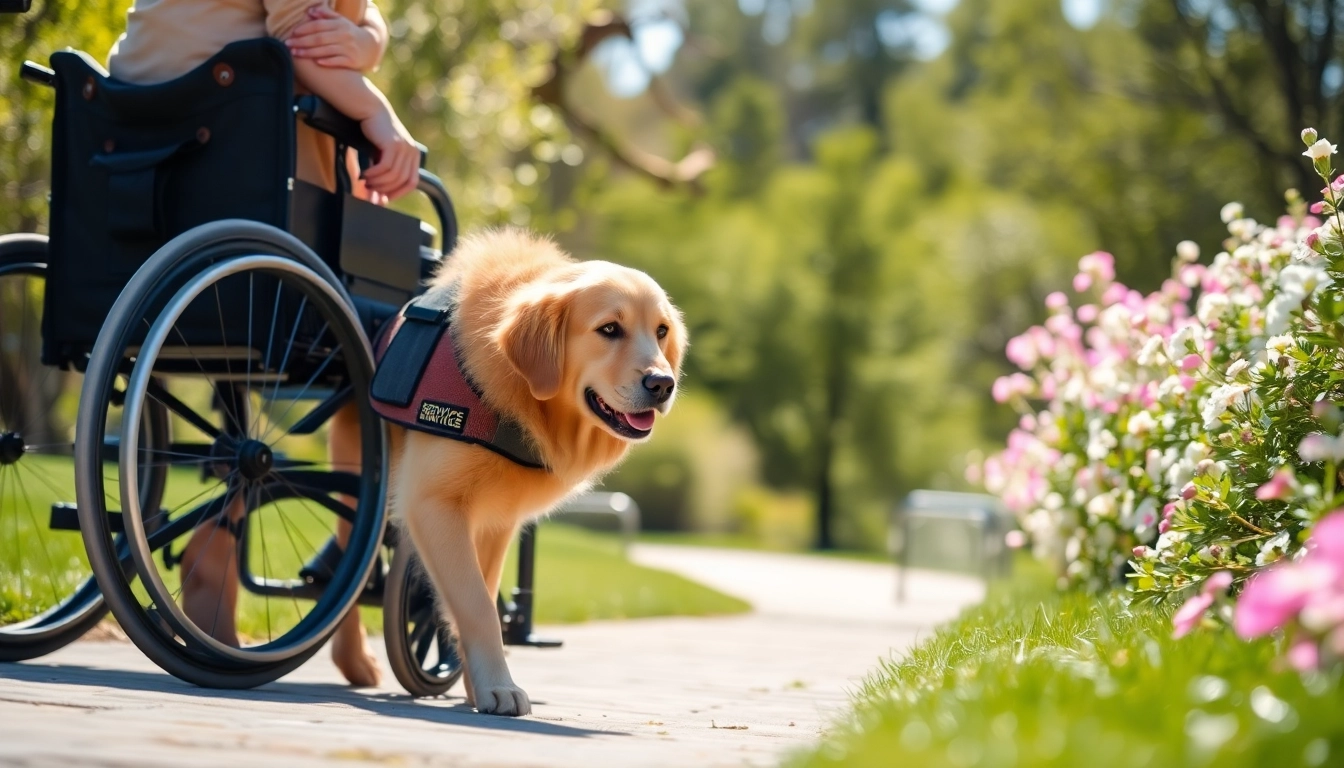Service dogs play a vital role in the lives of individuals with disabilities, providing assistance, support, and companionship that help enhance their independence and quality of life. Many people may wonder how to go about obtaining such a crucial partner. If you’re considering this life-changing decision, it’s essential that you understand the process to get a service dog, the requirements involved, and the commitments you’ll need to make. This comprehensive guide will delve into the essential aspects of acquiring a service dog, from understanding what a service dog is to the ongoing responsibilities that come with it.
Understanding Service Dogs
What is a Service Dog?
A service dog is a type of assistance animal specifically trained to perform tasks that aid individuals with disabilities. These tasks must be directly related to the person’s disability, establishing a functional relationship between the dog and handler. This distinction is crucial, as not all dogs qualify as service dogs—those deemed as emotional support animals or therapy dogs lack the same legal protections and roles.
Types of Service Dogs
Service dogs can be trained for various roles, each catering to the unique needs of their handler. Some common types include:
- Guide dogs: These dogs assist individuals who are visually impaired by guiding them around obstacles, stopping at curbs, and helping them navigate safely.
- Hearing dogs: These dogs are trained to alert individuals who are deaf or hard of hearing to important sounds, such as alarms or doorbells.
- Mobility assistance dogs: These dogs help users with physical impairments by retrieving dropped items, opening doors, or providing stability while walking.
- Medical alert dogs: These canines are trained to detect various medical conditions, like seizures or low blood sugar, alerting their handlers or a caregiver when necessary.
- Psychiatric service dogs: These dogs assist individuals with mental health disorders, providing cues, reminders, and emotional support during crises.
Legal Protections for Service Dogs
Service dogs have specific legal protections under the Americans with Disabilities Act (ADA). This federal law ensures that individuals with disabilities have the right to be accompanied by their service dogs in public spaces, including restaurants, stores, and workplaces. It’s important to note, however, that emotional support animals do not receive the same recognition under this law and may not have the same access rights.
Qualifying for a Service Dog
Eligibility Criteria Explained
Not everyone qualifies for a service dog, as there are specific criteria that must be met. Generally, the individual must have a documented disability that substantially limits one or more major life activities. The key criteria for eligibility include:
- Documentation: You need written documentation from a licensed healthcare provider that confirms your disability and the need for a service dog.
- Ability to Handle the Dog: You must possess the physical and mental capacity to handle a service dog. This includes understanding the dog’s training and commands, ensuring proper care, and providing sufficient socialization.
- Task Requirement: The dog must be able to perform specific tasks that directly assist with the disability. Vague or general assistance does not qualify.
Common Disabilities That Qualify
Several disabilities can qualify an individual for a service dog. Common conditions include but are not limited to:
- Vision impairment
- Hearing impairment
- Mobility challenges
- Seizure disorders
- Post-Traumatic Stress Disorder (PTSD)
- Severe anxiety or depression
Obtaining Documentation
Securing the necessary documentation from a qualified healthcare professional is a critical step in the service dog application process. This may include a letter detailing your diagnosis, the recommended treatment plan, and how a service dog would assist you in managing your condition. Ensure that the healthcare provider understands the requirements of the ADA and can provide comprehensive documentation that aligns with these criteria.
Finding the Right Training Program
Accredited Service Dog Training Options
Choosing an accredited training program is crucial for ensuring that your service dog is well-trained and capable of performing the necessary tasks. Look for organizations that are recognized by legitimate authorities in the field, such as Assistance Dogs International (ADI). These accredited programs adhere to established training standards and practices, ensuring high quality in handler and dog training.
Evaluating Training Programs
When searching for the right training program, consider the following factors:
- Training Methodologies: Look for programs that employ humane, positive reinforcement training techniques rather than punitive measures.
- Success Rates: Inquire about the success rates of previous placements and whether dogs continue to perform their tasks effectively after training.
- Support Services: Assess whether the program offers ongoing support, like refresher courses or behavioral consultations, post-placement.
Costs Involved in Training
The costs associated with obtaining a service dog can vary significantly depending on the training program, type of dog, and specific needs related to your disability. Training expenses can range from thousands of dollars to more affordable options provided through nonprofit organizations. Some programs may offer scholarships or reduced-cost services, so inquire into all available options. Consider any additional expenses related to food, veterinary care, and other routine needs for your service dog.
Steps to Get a Service Dog
Application Process Overview
The application process for obtaining a service dog typically involves several key steps:
- Research: Explore various training programs and their requirements.
- Gather Documentation: Obtain necessary documentation from healthcare providers and prepare your application.
- Submit Application: Fill out application forms for the chosen training program.
- Interview and Evaluation: Attend an interview or evaluation to assess your needs, living situation, and how a service dog would help.
- Matching: If accepted, the program will match you with a dog suited to your individual requirements.
- Training and Placement: Once matched, you will undergo training with your service dog to forge a strong bond and learn how to manage the dog effectively.
Preparing for Your Interview
Preparation is vital for making a positive impression during the interview process. Consider the following tips:
- Be honest about your needs and how a service dog will assist you.
- Prepare questions about the training program and what to expect during the process.
- Show readiness to commit to the responsibilities associated with having a service dog.
Tips for Successful Placement
Successful placement of a service dog relies on mutual compatibility and understanding. Some tips include:
- Be open-minded: Be prepared for a variety of breeds and temperaments that may suit your needs.
- Engage actively in the training: The bond between handler and dog strengthens through proactive participation in training sessions.
- Maintain continued training post-placement: Ongoing training ensures that your service dog remains sharp in their skills and continues to adapt to your needs.
Ongoing Care and Responsibilities
Maintaining Your Service Dog’s Training
Once you have successfully placed your service dog, it’s essential to maintain their training. This requires a commitment to reinforcing the commands and tasks learned during the training program. Regular practice helps ensure that your service dog remains proficient in their duties and comfortable working with you in various environments.
Legal Rights and Responsibilities
As a service dog handler, you have specific legal rights under the ADA that protect your ability to bring your service dog into public spaces. However, with these rights come responsibilities. Handlers are expected to keep their service dogs under control, clean up after them, and ensure they are well-behaved. Understanding these guidelines ensures a smooth experience when navigating public areas.
Community Resources for Support
Building a support network is crucial for service dog handlers. There are various resources available, including online forums, local support groups, and organizations that focus on training and assistance for service dogs. These communities can offer invaluable insights, allow for sharing experiences, and facilitate connections with other service dog handlers.
In conclusion, obtaining a service dog can be a life-altering decision that enhances independence and improves quality of life for those with disabilities. By understanding the process and commitments involved, individuals can navigate the journey more effectively. If you’re interested in pursuing this avenue, take the time to get a service dog and change your life for the better.



